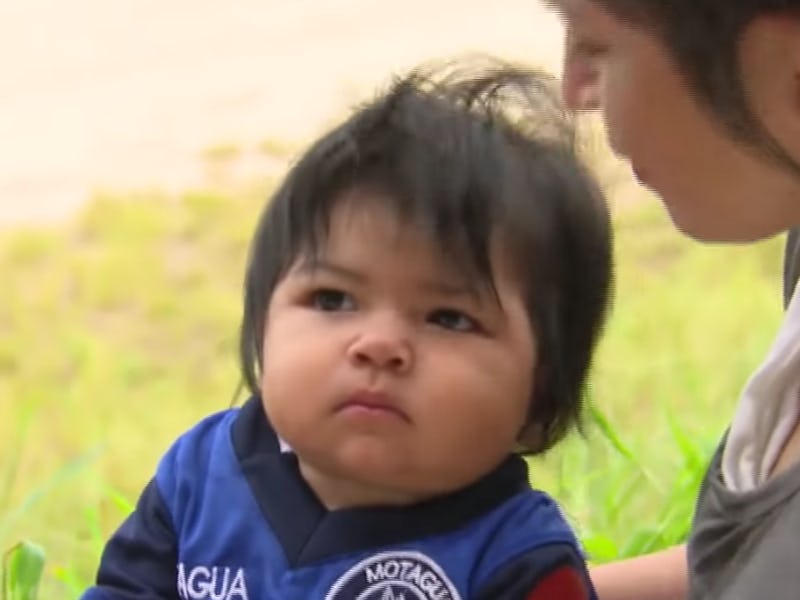US Customs ‘Tender Age’ Shelter is a Nonsense, Nonscientific Term
'In my opinion, it's a suspect term.'

Trump administration officials are sending infants and young children who are separated from their parents at the United States-Mexico border under the administration’s “zero-tolerance” immigration policy to at least three “tender age” shelters in Texas. But the term “tender age,” Columbia University social work expert Beth Counselman Carpenter, Ph.D, LCSW, tells Inverse, is not a typical term used for kids in the fields of developmental psychology or pediatric behavioral health.
“In my opinion,” Carpenter said in an email, “it’s a suspect term.”
Steven Wagner, an official with the Department of Health and Human Services, said that the “tender age” shelters are “specialized facilities that are devoted to providing care to children with special needs and tender age children as we define as under 13,” the Associated Press reported Wednesday. The term struck many on the internet as a form of creepy doublespeak, and, as Carpenter suggests, it may not have any real definition at all.
Customs and Border Protection has sometimes defined “tender age” as 5 and under, the Chicago Tribune noted Wednesday. Some lawmakers have described seeing an eight-month-old baby in one location. Michelle Brane, director of migrant rights at the Women’s Refugee Commission, reportedly met a 16-year-old girl in a facility in Texas who’d been taking care of a little girl she and others who worked with her thought was 2 years old; she was in fact 4, but was so traumatized that she wasn’t communicating.
The term “tender age” suggests there exists some modicum of sensitivity and care for the well-being of the children, but the meaninglessness of the term and the reality of the way the children are being mistreated indicate otherwise.
Carpenter, echoing the concerns raised by many scientists in response to the government’s support of child separation, says that separating kids from their parents at very young ages can do significant, long-term damage to their mental health.
“Separating children at such a young age is a huge risk factor as it caused attachment disruption,” she says. “The long term mental health outcomes for young children abruptly taken from their parents can be quite significant.”
She described a “highly unethical” 1959 experiment in which baby primates were removed from their mothers and placed alongside one of two artificial moms: one made of wire mesh that provided food from a bottle, and one made of terry cloth that did not provide food. The babies strongly preferred the terry cloth mother despite the fact that it didn’t provide nutrition, because of their need for physical comfort and affection. “The findings of this study demonstrated that the importance of contact comfort with caregivers cannot be under-estimated!” Carpenter says.
According to John Bowlby’s widely accepted attachment theory, says Carpenter, children around the age of 18 months to 2 years have developed close bonds with their caregivers and experience separation anxiety when separated. “Around 2 is when children need to develop the trust that their caregiver will be there and available in times of need or distress,” Carpenter explains. “Clearly, this need can’t be met with what is currently happening in these shelters!”
Separating kids at this age can hamper their ability to develop a solid Internal Working Model, which in turn can impact the formulation of their personality and their ability to make secure relationships in the future, Carpenter says. In other words, by sticking kids in “tender age” shelters, the administration may be screwing them up for the rest of their lives.
No matter what you call the shelters, there’s nothing tender about what’s going on inside them. The practice of separating families and removing small children from their parents has been demonstrated time and again to be dangerous to their health, and the impacts may stay with them for the rest of their lives.